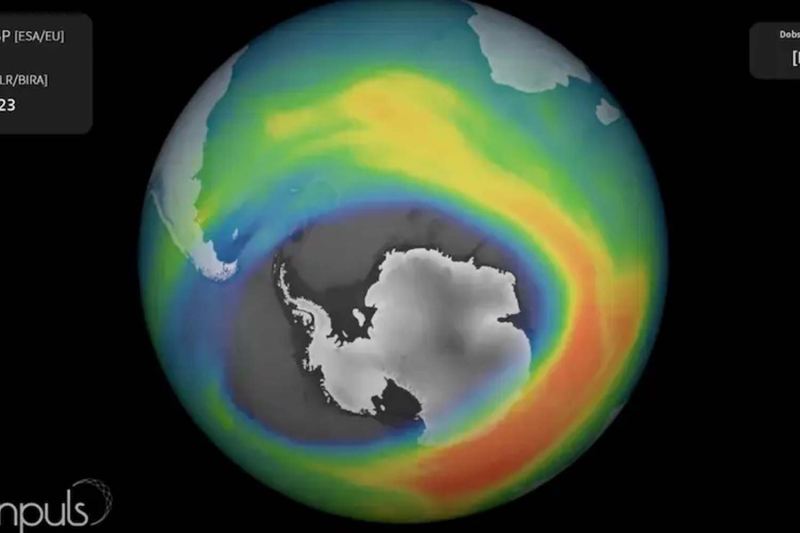
© ESA
While SpaceX has authorization to put into orbit up to 42,000 satellites, and more than 8,000 satellites (including 6) 000 of the firm) are currently already in low orbit, a study published in Geophysical Research Letters Journal is concerned about their effect on the ozone layer.
More precisely, the effect of their disintegration in the upper atmosphere on this shield that protects us from the most dangerous UV rays. Until the Starlink constellation, the number of satellites in low orbit was rather limited. And since the ban on CFC gases in the 1980s, the ozone layer has tended to strengthen – with a hole decreasing in size year by year.
Starlink and its competitors pose a new challenge for the ozone layer
However, the explosion in the number of these satellites, in particular with their frame made of aluminum – which produces oxides with a particularly destructive effect in this part of the atmosphere – appears poised to spectacularly reverse the progress made over several decades.
Thus the study notes that between 2016 and 2022, the presence of aluminum oxides in this layer has increased eightfold. And nothing seems capable of reversing this trend… especially since current satellites are designed for a lifespan of barely five years.
However, we are only talking about the Starlink launches: Amazon also wants to have thousands of satellites of the same type for its Kuiper project. Unlike CFC gases, these oxides pose another problem: they are catalysts, which are not consumed during the reaction. They can thus remain in suspension for decades, before slowly descending into the lower layers.
200% Deposit Bonus up to €3,000 180% First Deposit Bonus up to $20,000Risk of a forward flight
Some 18.7 tonnes of these oxides were thus pulverized in 2022 according to the study. A quantity which could quickly increase to nearly 400 tonnes per year, with a significant effect on the weakening of the ozone layer. ;, alert the authors.
Although it is not yet really possible to link the two phenomena, we note that the hole in the ozone layer has reached unprecedented dimensions in 2023. In contradiction with data from recent years. This hole above Antarctica was thus comparable with three times the size of Brazil.
However, causes other than the disintegration of satellites are being explored at this stage. It remains to be seen how Starlink and its competitors could avoid being responsible for a real “bomb” for this protective layer essential to life on Earth.
We imagine that the firm could play on both the durability of its satellites and their materials. In low orbit, for the moment, there is no real alternative to the disintegration of satellites at the end of their life – which are sometimes placed for those in higher orbits, in a “waste orbit” where they can remain indefinitely without impact on the atmosphere.
- The disintegration of a growing number of Starlink satellites in low orbit is pulverizing a worrying quantity of aluminum oxides, very dangerous for the ozone layer.
- If nothing is done, warns a study, efforts to repair the ozone layer could quickly find themselves destroyed.
- A serious problem, especially since we expect an explosion of objects in low orbit in the coming years
📍 So you don't miss any news from Presse-citron, follow us on Google News and WhatsApp.
[ ]

